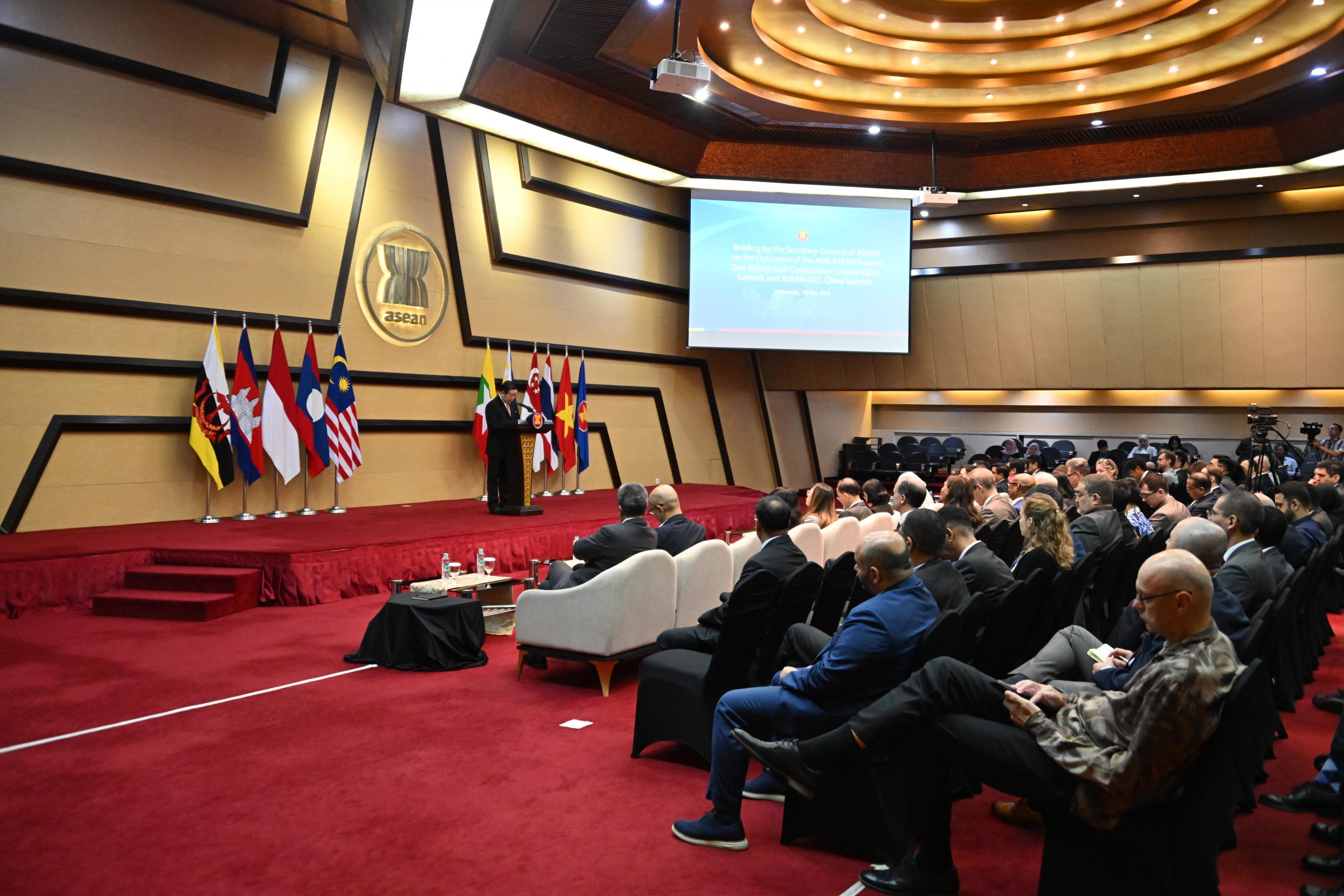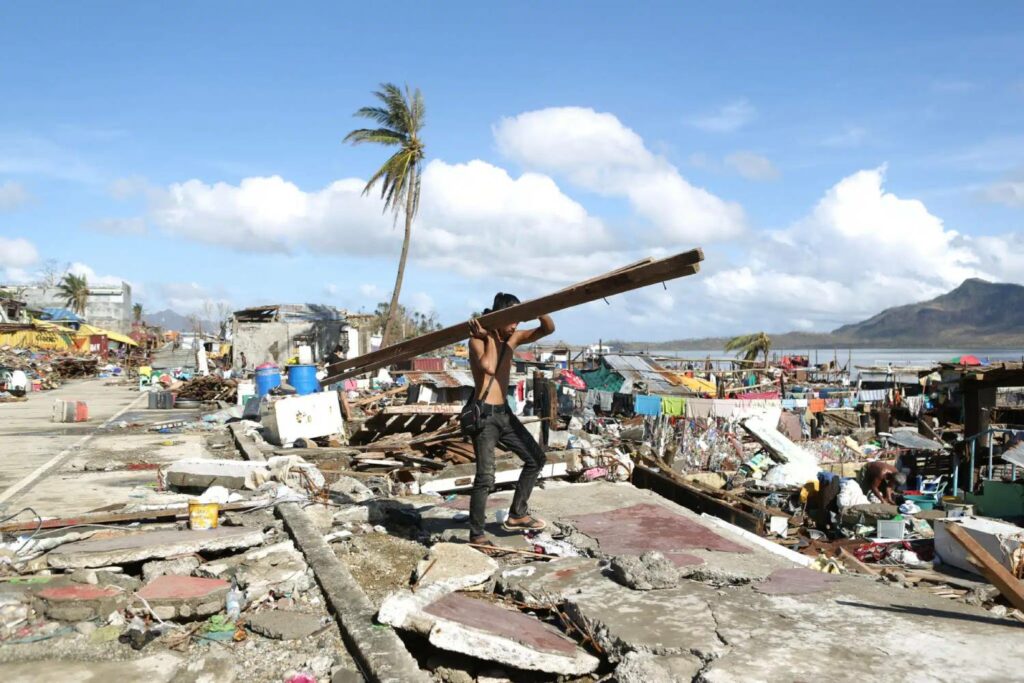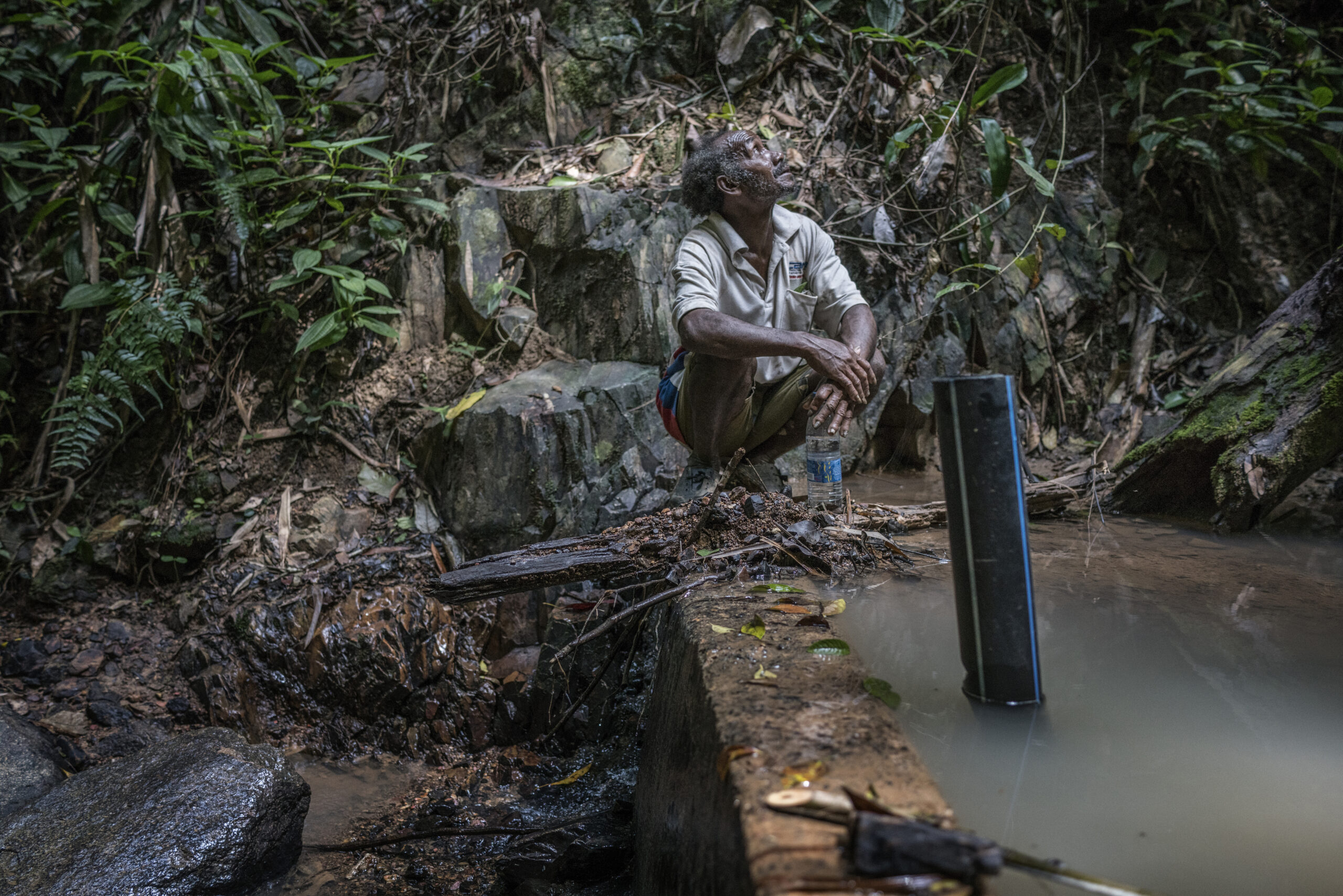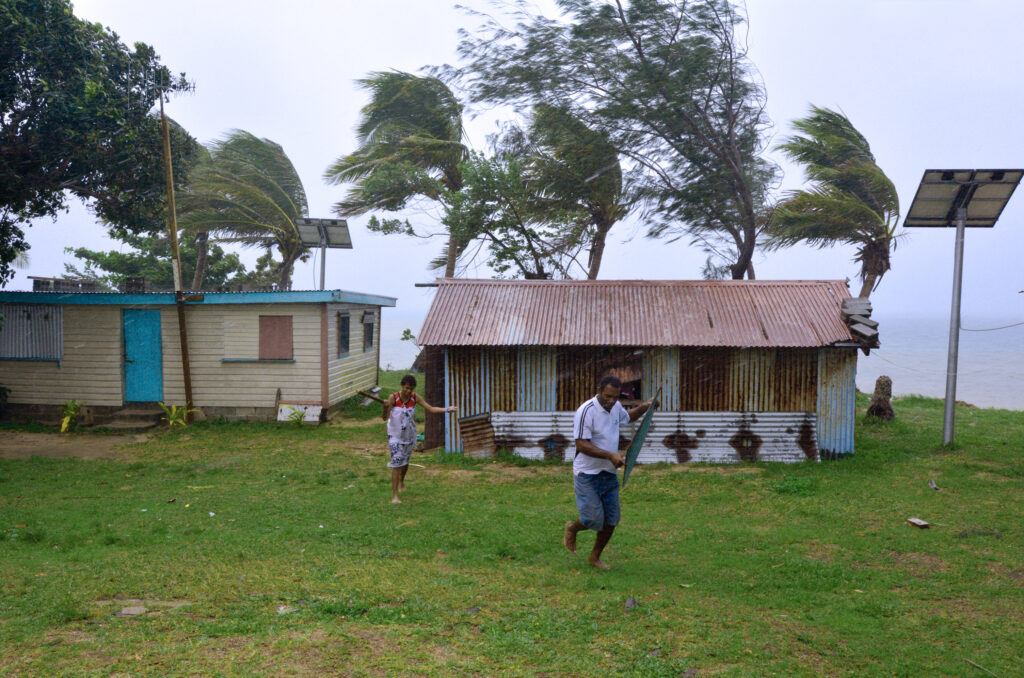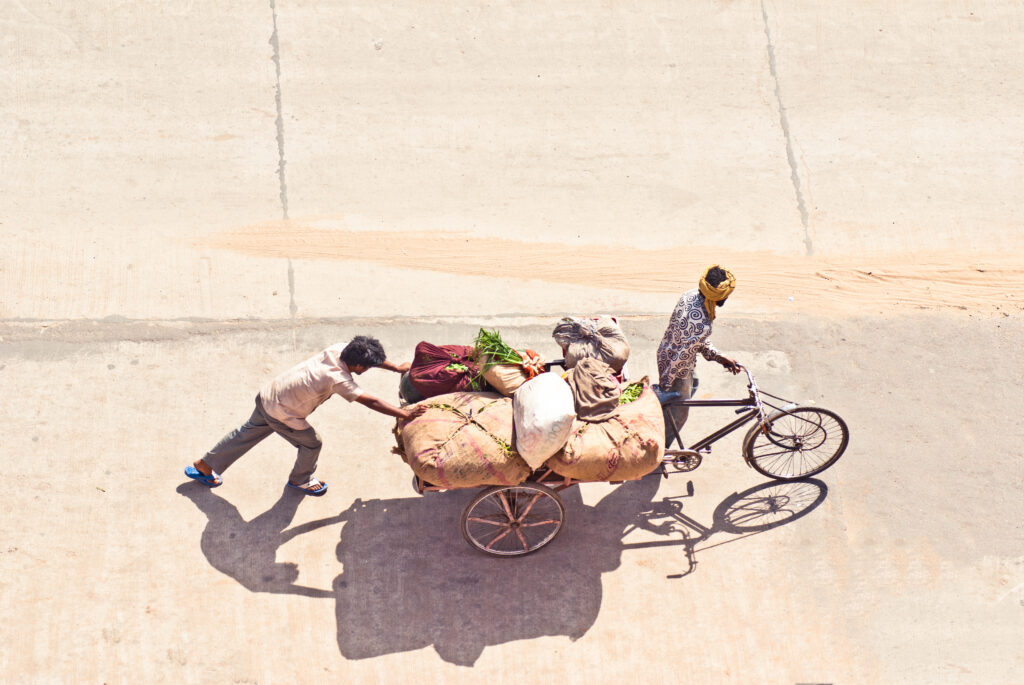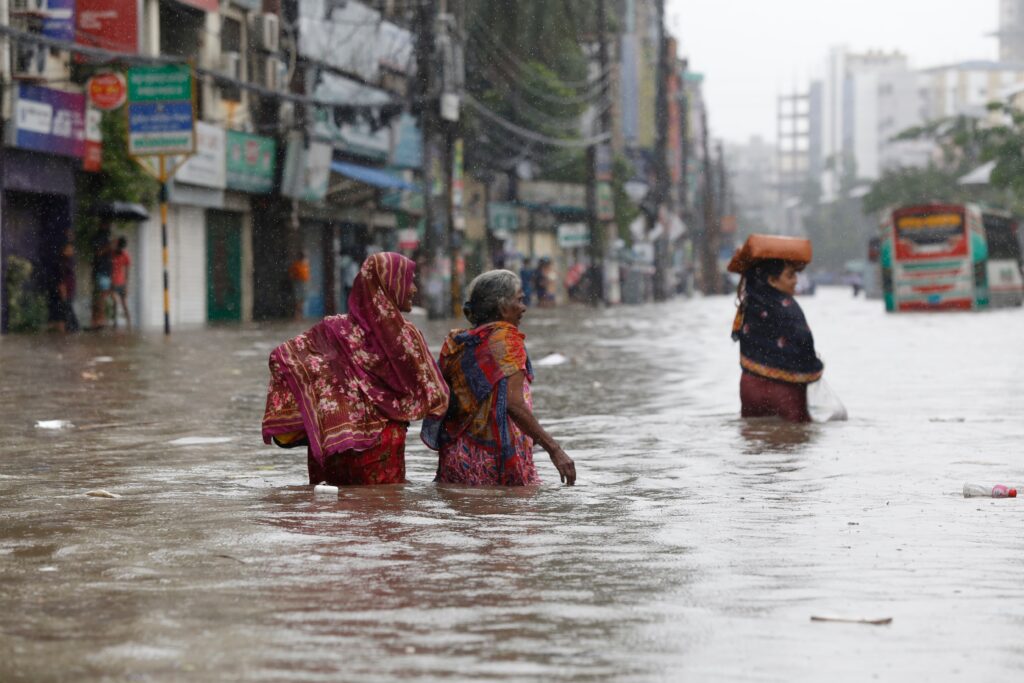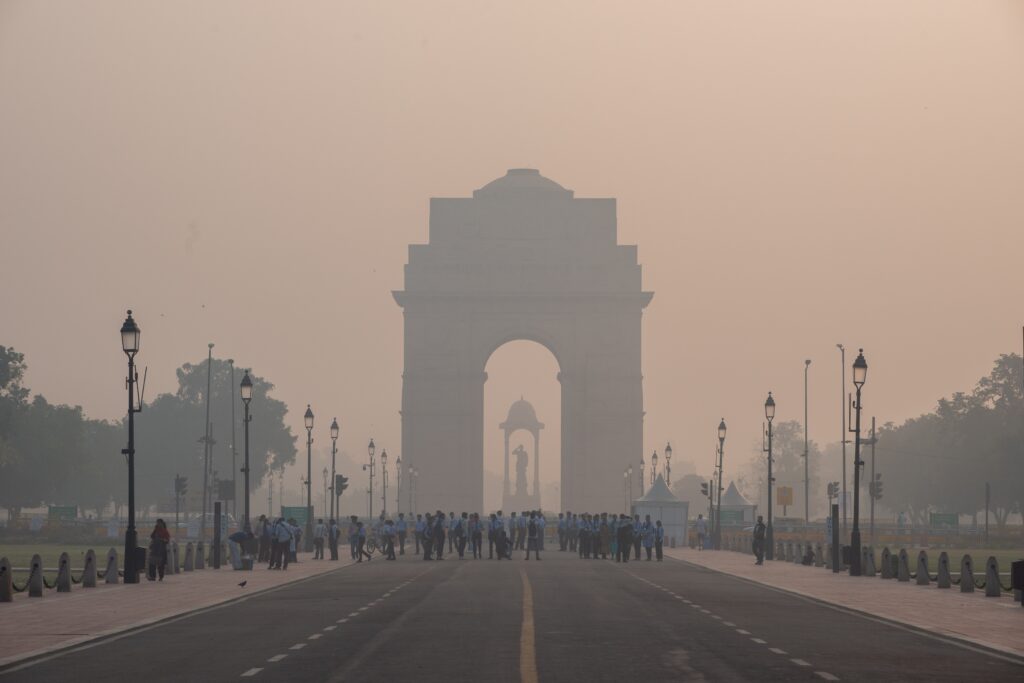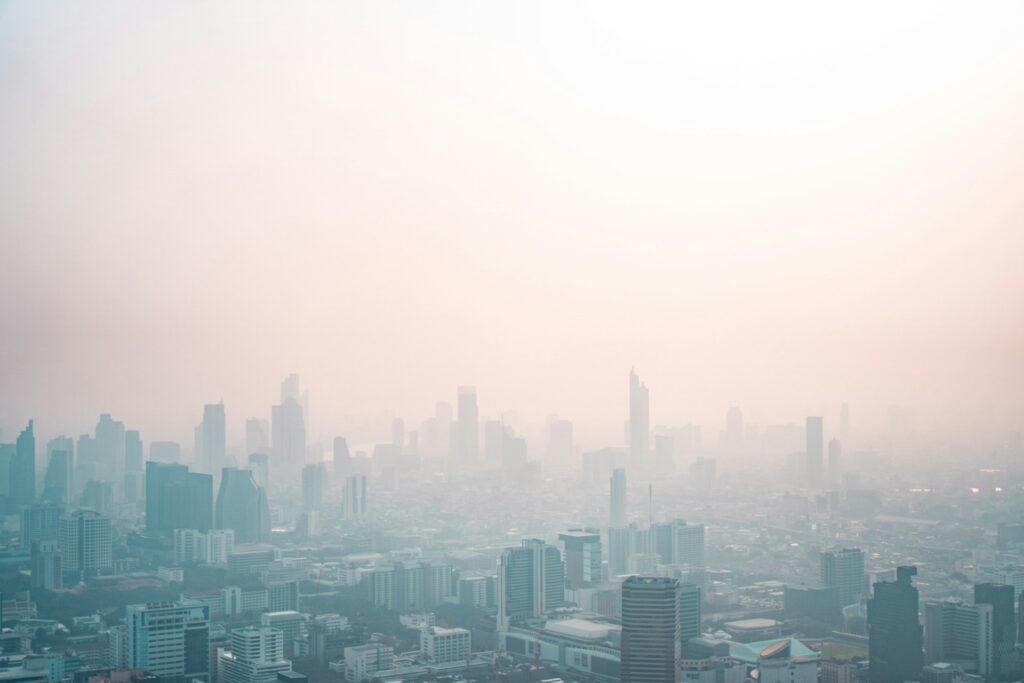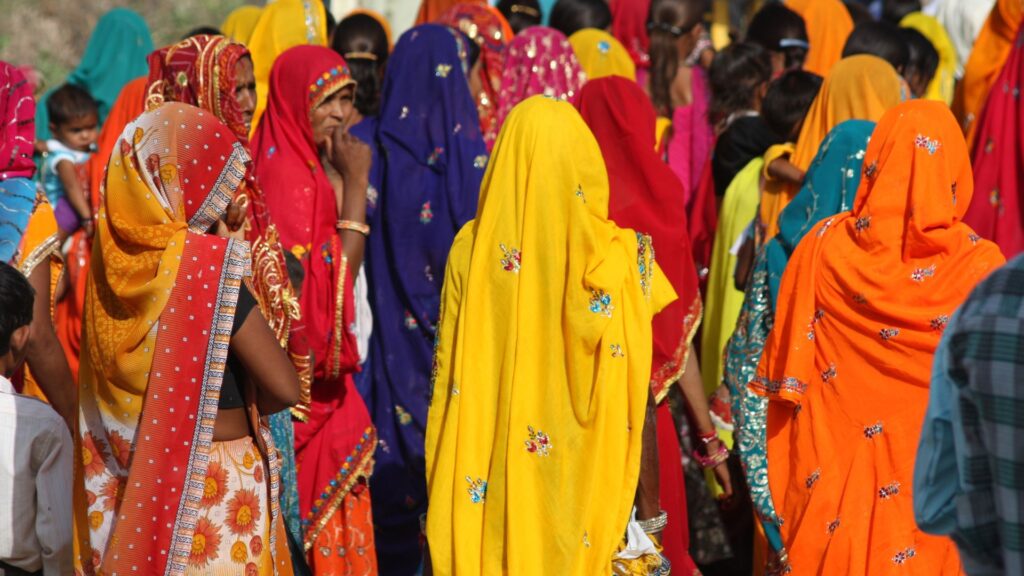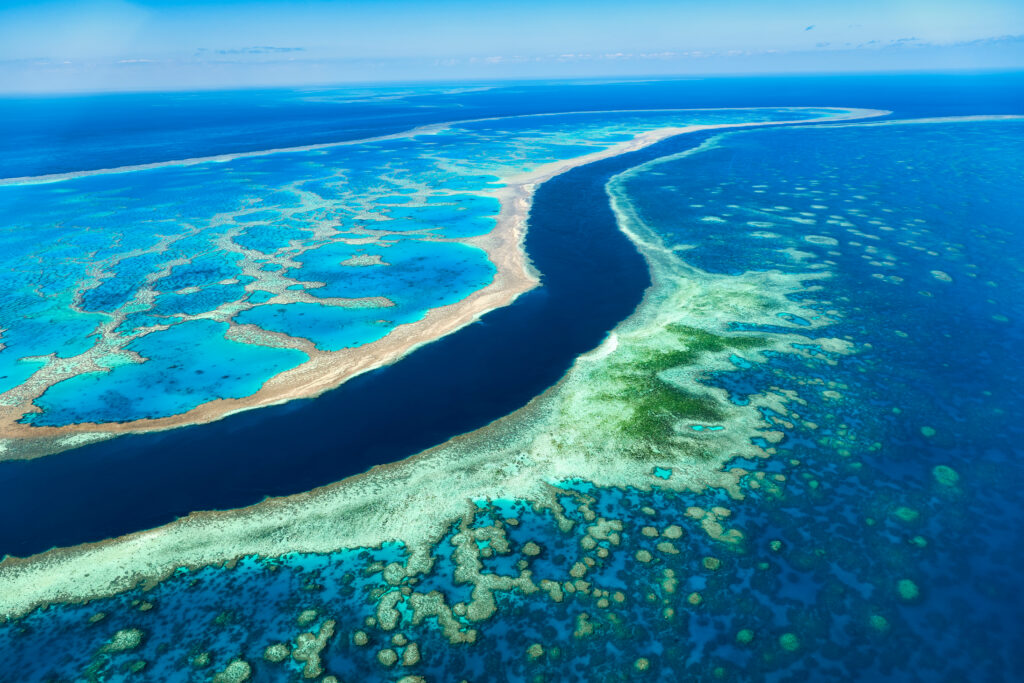“In the future, millions across ASEAN will face the impacts of climate change,” states “ASEAN 2045: Our Shared Future” — the key document that will guide the region’s development and cooperation over the next two decades. The strategy, revealed in the lead-up to the 46th ASEAN 2025 Summit in Kuala Lumpur, Malaysia, promises to “promote awareness, respect and protection of human rights” and work to reduce the impact of disasters “for better protection of communities”.
The very crisis the document vowed to confront was unfolding outside the summit’s halls, as the two days of the meeting saw unusually high temperatures made five times more likely due to climate change all across ASEAN countries — from Vietnam to Indonesia and the Philippines to Malaysia.
Despite recognising the importance of climate action and pledging to protect the most vulnerable and frontline communities during the summit, ASEAN leaders ultimately committed to keeping fossil fuels as the primary source of energy all the way to 2050. And with that, all the fanfare about putting the focus on “community” rings hollow, as pressing issues facing Southeast Asia — from energy security to air pollution and climate-related disasters. These problems are at risk of being exacerbated.
The 46th ASEAN Summit at Kuala Lumpur in May 2025 Promised Increased Cooperation on Economy, Security and Innovation
On May 26 and 27, leaders of ASEAN nations, alongside China and Persian Gulf states, participated in the highest policymaking meeting of the ASEAN. The 46th ASEAN Summit in Malaysia focused on the concept of “community” and standing united against external risks threatening the region’s economic, political, security and sociocultural development.
In many aspects, the summit proved a success, with countries strengthening cooperation in key areas. Among them are jointly navigating global geopolitical uncertainty and the economic toll of President Donald Trump’s trade tariffs.
Parties pledged to collaborate on enhancing economic cooperation, trade, mobility, digital innovation and security in the region, as well as to further develop and strengthen the ASEAN power grid. Another significant announcement was an agreement between government-linked firms from Malaysia, Singapore and Vietnam to jointly explore the exporting of renewable energy.
In his opening remarks, Malaysian Prime Minister Anwar Ibrahim said a new chapter of cooperation between ASEAN, China and the Gulf Cooperation Council (GCC) is emerging. The GCC comprises world-leading fossil fuel producers and petrostates, including Bahrain, Kuwait, Oman, Qatar, Saudi Arabia and the United Arab Emirates.
“I am confident that ASEAN, the GCC and China can draw upon our unique attributes and shape a future that is more connected, more resilient and more prosperous,” he said.
The last time Malaysia chaired the meeting was 10 years ago, when the focus was on countering China’s growing influence in the region. China’s invitation to this year’s summit marks a significant shift, reflecting ASEAN’s willingness for closer ties with the global superpower.
In fact, China’s influence on the region has been increasing in recent years, as evidenced by the latest data. In a report tracking investment trends in Southeast Asia’s green economy, Zero Carbon Analytics found that China remains the leading investment source, providing over USD 2.7 billion to Indonesia, the Philippines, Thailand, Malaysia and Vietnam between 2013 and 2023. The country also led in the clean energy trade, exporting USD 4.3 billion in EV batteries, solar modules and wind components to these markets.
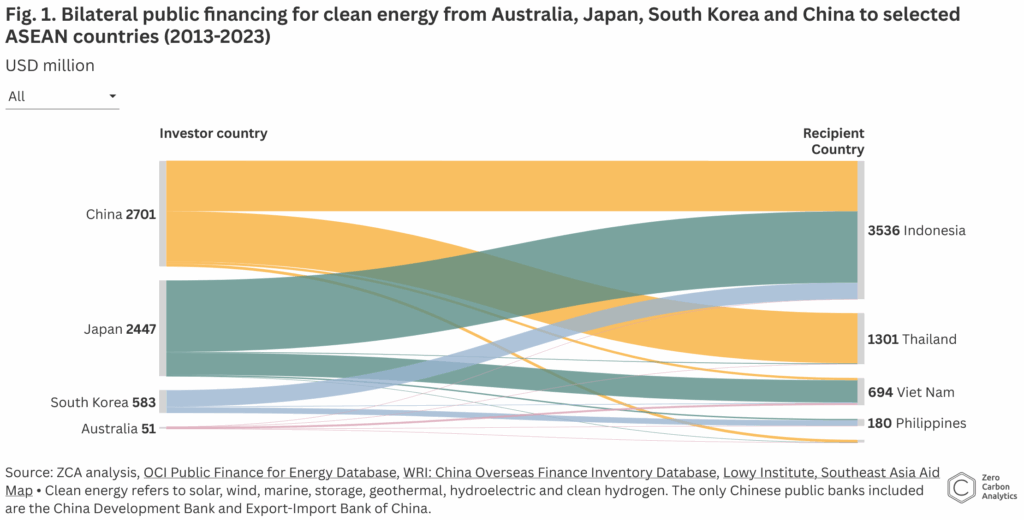
In total, since 2020, ASEAN nations have experienced a 15% annual average growth in clean energy project investments, with South Korea and Japan also making significant contributions.
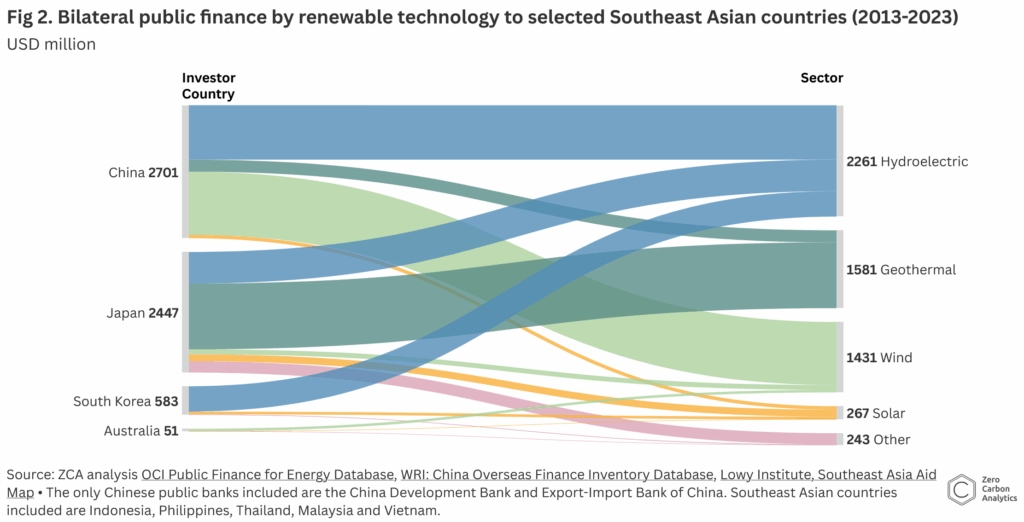
ASEAN Leaders Promise Climate Action but Plan For Continued Fossil Fuel Use
Speaking at the post-meeting briefing, ASEAN Secretary-General Kao Kim Hourn highlighted the adoption of “ASEAN 2045: Our Shared Future“, describing it as a key document that will guide the region’s development and cooperation over the next two decades.
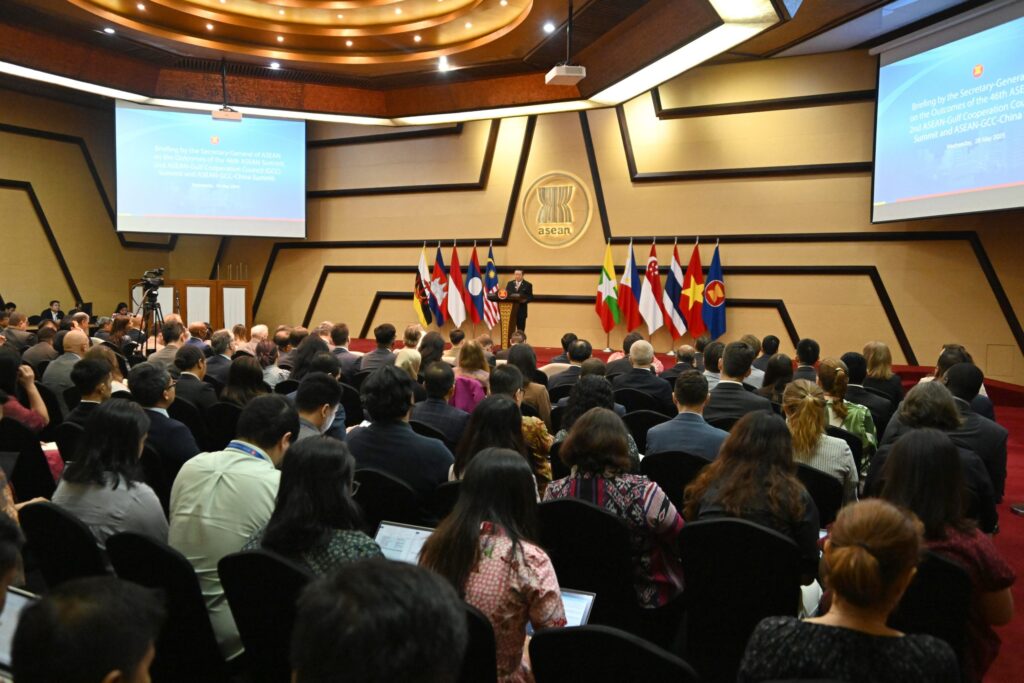
The document acknowledges that “millions across ASEAN will face the impacts of climate change,” citing rising sea levels and shifting crop harvests as threats to water and food security. It sets the objective of achieving “a resilient Community that promotes human security and increases people’s resilience in responding to future health emergencies, crises, disasters and impacts from climate change”.
Still, the same document reveals that ASEAN leaders intend to continue relying on fossil fuels in the long term. It states that, by 2050, “fossil fuels are projected to contribute heavily to the region’s energy supply”, with 63.4%.
The joint statement document of the summit said nations would work “together towards a sustainable, just, affordable, inclusive and orderly energy transitions in line with the Paris Agreement” and recalled “the urgent need to address climate change and stress the importance of the energy transition”. Yet, the same document also reveals ASEAN members’ determination to collaborate on “driving the strategic development of initiatives on hydrogen and ammonia technologies, oil and LNG supply chains and infrastructure, upstream LNG projects, methane abatement and emissions reduction to support both energy security and the transition to cleaner fuels”.
ASEAN Emerges as a Testing Ground For Fossil Fuel Technologies
Zero Carbon Analytics’ report reveals that China, Japan, South Korea and Australia all have a variety of climate-related policies and initiatives targeting ASEAN. However, not all of them are focusing exclusively on green technology, as the case of Japan’s Asia Zero Emissions Community (AZEC) demonstrates. Analysts have accused Japan of using the framework to promote expensive and polluting fossil fuel-based technologies, such as ammonia co-firing and CCUS, as decarbonisation solutions for ASEAN nations. After screening AZEC deals, Zero Carbon Analytics finds that just 7% of the projects involve wind or solar, while over a third include fossil fuel technologies, such as LNG. Furthermore, there are reports that the Japanese fossil fuel lobby is building gas markets in Asia to boost LNG trading and export fossil fuel-based technologies.
In fact, a report published ahead of this year’s ASEAN Summit by a group of Southeast Asian organisations revealed that Japan is the region’s largest financier of fossil fuels. Between 2016 and 2024, international banks have provided USD 45.2 billion, with over 71% going to coal projects. The Japan Bank for International Cooperation (JBIC) was branded “the dirtiest foreign financier,” being responsible for 30% of the total financing. The domestic banks that financed the most downstream coal were from Indonesia, Vietnam, the Philippines and Malaysia. Banks from Malaysia and Thailand were the leading domestic banks with the most commissioned gas capacity following the Paris Agreement.
“Japanese banks, especially JBIC, are enabling the continued buildout of coal and gas infrastructure in Southeast Asia, putting climate goals and local communities at risk,” said Gerry Arances, executive director of the Center for Energy, Ecology and Development (CEED) and convenor of the Energy Shift Southeast Asia.
Experts note that Japan’s significant investments in fossil fuels are shaping energy policies in South and Southeast Asian nations. Furthermore, TransitionZero warns that Japan is misleading countries in the region regarding the carbon emissions-saving potential of its technologies when, in fact, they would emit comparable or double the amount of emissions compared to traditional gas power generation by 2030.

Continued Fossil Fuel Use Risks Worsening the Problems Tormenting Vulnerable Communities in ASEAN
There is no emission scenario — not even one aligned with the Paris Agreement’s 1.5°C goal — upon which coastal ASEAN nations won’t have territories underwater due to rising sea levels. The Philippines is facing the risk of unprecedented compound extreme weather events, according to the IPCC, with sea level rise three times the global average since 1901, the highest in the world. Ho Chi Minh City, the largest city in Vietnam, is among the most vulnerable cities to rising sea levels globally. The country itself is one of the five most exposed to climate change, according to the World Bank.
Under the current 2.6-3.1°C warming trajectory, the consequences would be devastating for many frontline communities, including some of the region’s poorest and most vulnerable that rely on the agriculture and fisheries sectors. By 2048, climate change could result in GDP losses of up to 37.4% for ASEAN countries.
Furthermore, according to UNICEF, children in East Asia and the Pacific face the greatest exposure to multiple climate disasters globally. Over 65% of the children in the region are facing four or more simultaneous climate shocks, nearly double the global average of 37%.
The region is also extremely vulnerable to heatwaves, with scientists considering Southeast Asia a window into the future of extreme heat. Climate Central finds that six out of 11 cities that endured heat strongly influenced by climate change for 30 days or more between December 2024 and February 2025 were in Asia. Without urgent action to reduce emissions, heatwaves in Indonesia, for example, will last almost 8,000% longer by 2050.
Source: Climate Central
According to Germanwatch’s Global Climate Risk Index 2025, four of the top 10 most affected countries by climate change between 1993 and 2022 are from Asia. Myanmar (4th) incurred the highest number of fatalities, while China (2nd) and the Philippines (10th) had the most affected per 100,000.
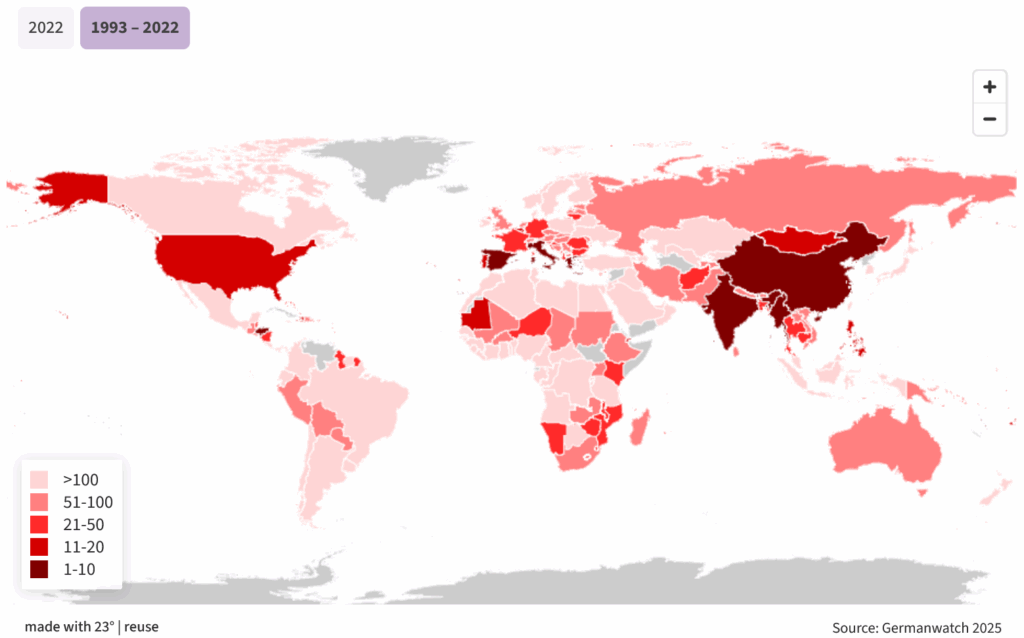
According to scientific research, South and East Asia have the biggest number of deaths due to long-term exposure to air pollution, including ambient fine particulate matter (PM2.5) and ozone (O3). In Indonesia, fine particulate matter is responsible for 94,000 deaths per year. In Thailand and Malaysia, it takes the lives of 32,000 annually. According to the WHO, in Vietnam, around 60,000 deaths each year are attributed to air pollution.
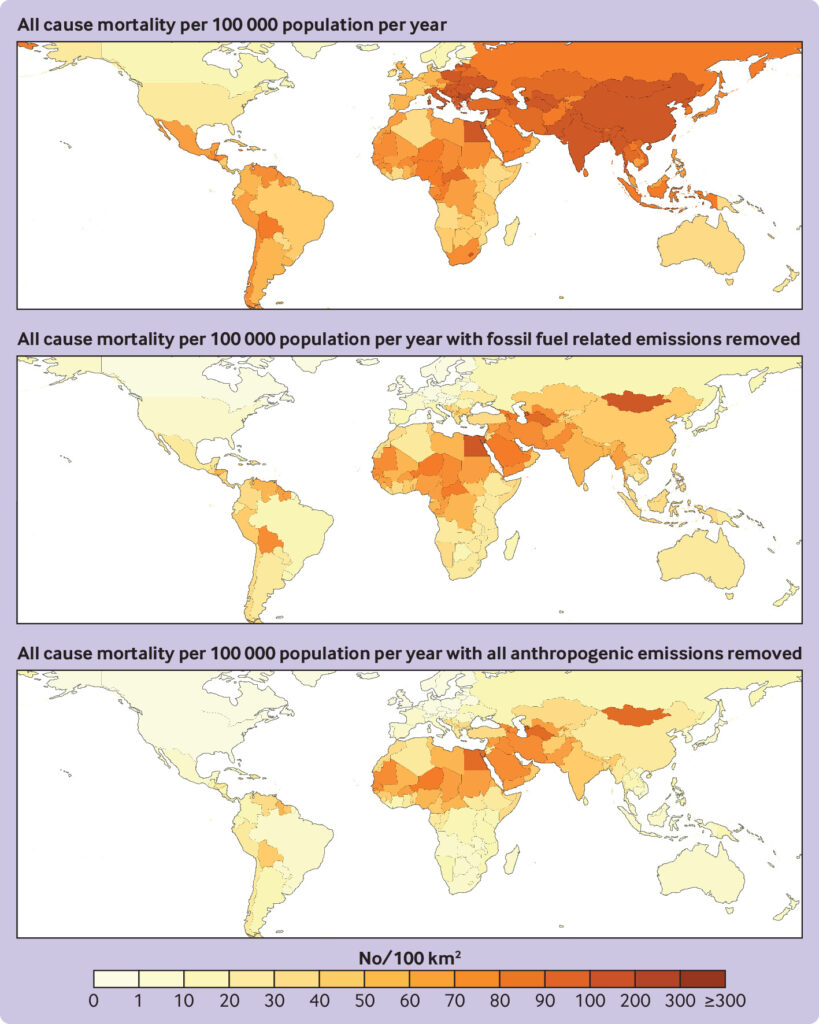
Continued investments in proposed co-firing technologies and CCS will further extend the lives of fossil fuel plants, locking Southeast Asian countries into more air pollution. A study by the Center for Research on Energy and Clean Air (CREA) finds that displacing coal with ammonia substantially increases total pollutant emissions. For example, a 20% ammonia co-firing combustion rate can increase fine particulate matter (PM2.5) and other harmful substances by 67%. At a 50% co-firing rate, the increase is 167%.
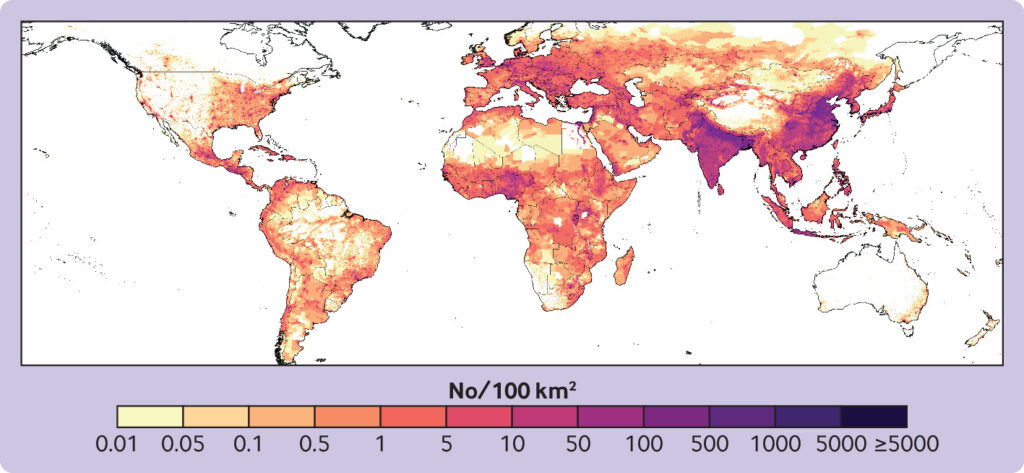
Toward the 47th ASEAN Summit in October 2025
The climate crisis is the greatest threat to the more connected, more resilient and more prosperous future and the people-centric policies ASEAN leaders promise. However, the contradicting statements in the official documents from the summit fail to inspire confidence in the promoted idea of a “resilient, people-centred ASEAN” where ASEAN peoples are “at the heart” of all efforts.
The determination to continue investing in fossil fuels directly opposes the promise to “strengthen ASEAN’s position in promoting sustainability and climate responses”. Furthermore, it erodes the credibility behind ASEAN leaders’ claim that they were looking forward to the adoption of the ASEAN Declaration on the Right to a Safe, Clean, Healthy and Sustainable Environment.
The Paris Agreement is essentially a human rights treaty, and any efforts that hinder progress toward its objectives are a denial of justice for those most severely impacted by the climate crisis.
The 47th ASEAN Summit on Oct. 24-26, as well as the upcoming NDC updates this year, offer leaders another opportunity to demonstrate that climate action isn’t just a box to check at regional meetings but a moral responsibility to ensure a safe and sustainable future for future generations.
Viktor Tachev
Writer, Bulgaria
Viktor is a writer that specialises in green finance and ESG investment practices. He holds a Master's degree in financial markets and has over a decade of experience working with companies in the finance industry, along with international organisations and NGOs. Viktor is a regular contributor to several publications and comments on the likes of sustainability and renewable energy.
Viktor is a writer that specialises in green finance and ESG investment practices. He holds a Master's degree in financial markets and has over a decade of experience working with companies in the finance industry, along with international organisations and NGOs. Viktor is a regular contributor to several publications and comments on the likes of sustainability and renewable energy.

